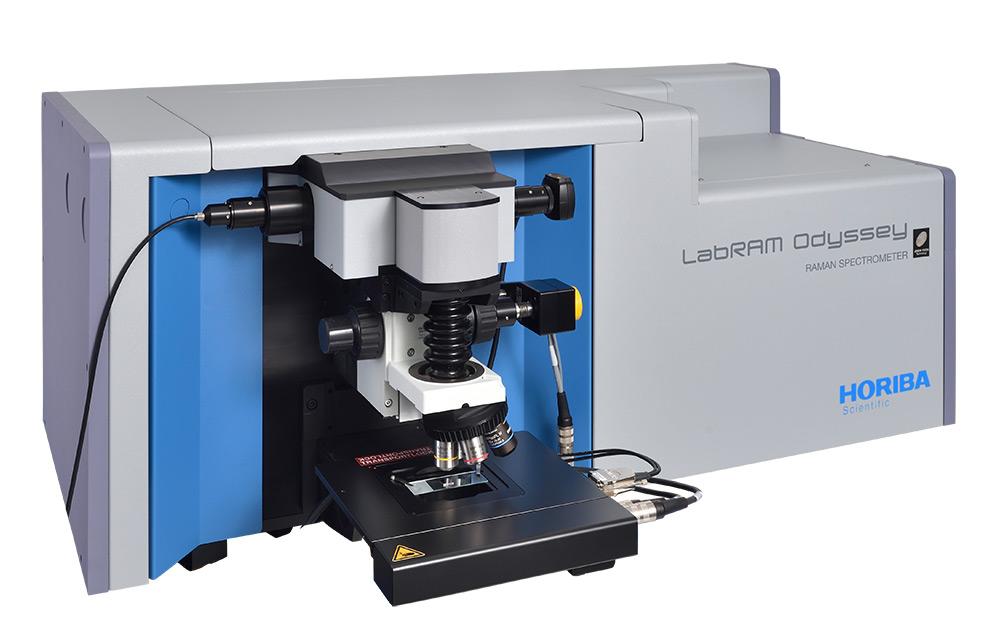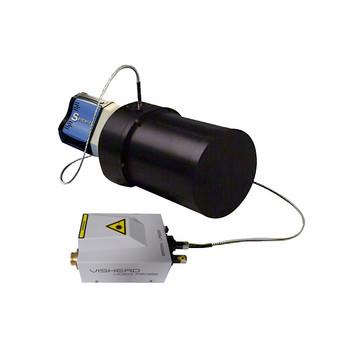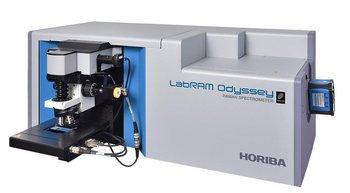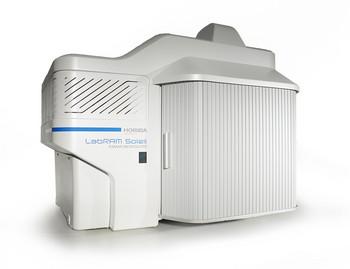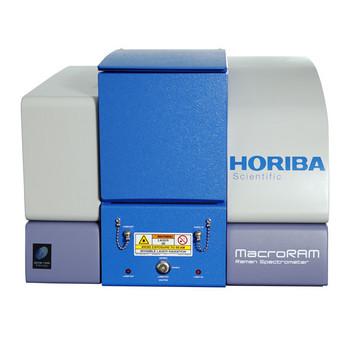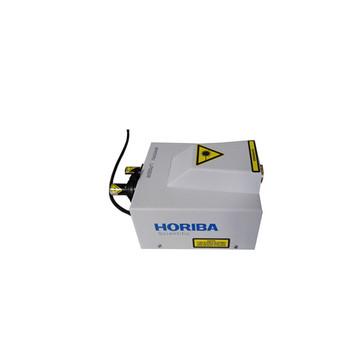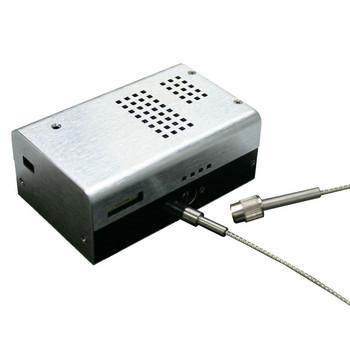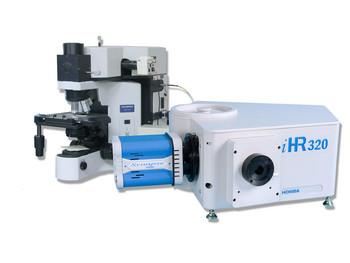The optimized UV configuration of the LabRAM Odyssey offers many distinct advantages for UV Raman spectroscopists. It is the only system available which has been built from the ground up to work in the broad UV-visible range, working from 200nm through to 2100nm. It utilises a fully achromatic, lens-free design.
- Dual path optics allow fast and easy switching between optimized “visible” (400nm-800nm) and achromatic broad range (UV, visible, IR) optical paths.
- Full achromatic lens-free design
Lens based designs for UV Raman suffer from a number of disadvantages. However carefully designed, lenses can only offer consistent performance in a limited spectral range. Spectrometers which utilise lenses for broad range coverage will exhibit loss of signal intensity and spectral resolution due to optical defocus/aberration within the spectrometer. - High spectral resolution
The unique 800mm long focal spectrometer of the LabRAM Odyssey offers spectral dispersion in the order of 1-2cm-1/pixel in the 200-400nm region, allowing high quality Raman spectra without loss of detail.
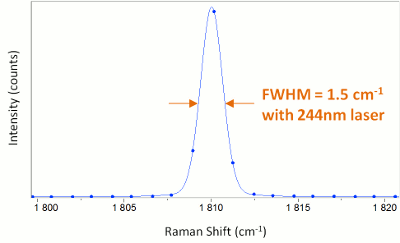
Typical spectral resolution achievable in the deep UV region with the LabRAM Odyssey.
- All reflective x74 mirrored objective
Over broad ranges chromatic shifts induce a focal point gap between the white light optical image and laser spot. With the optional all-mirrored x74 objective, it is possible to remove any chromatic shift and abberation, allowing easier sample visualization and alignment, and true diffraction limited spatial resolution.
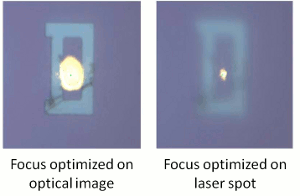
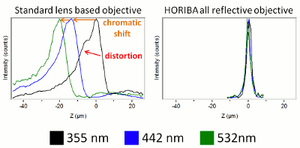
Depth profiles acquired with standard lens objective and HORIBA all reflective objective, illustrating the latter’s superior performance.
